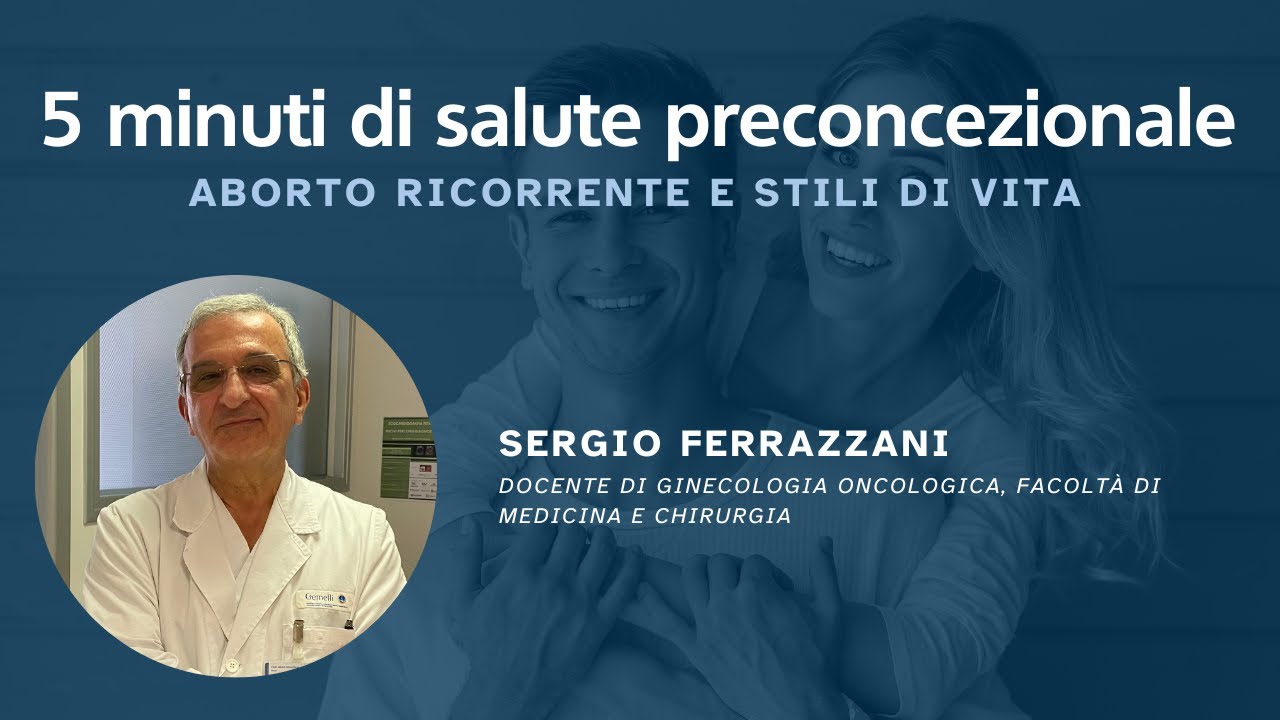Recurrent miscarriage and lifestyles
A distinction must be made between early abortion, before the tenth week, and late abortion after the first ten weeks. The frequency of early abortion is high. From 12% to 15% of pregnancies are terminated with an early abortion, therefore, almost one in seven pregnancies. The main cause is an alteration in the karyotype of the embryo, which occurs during conception. We speak of "recurrent miscarriage" when at least two of them occur in a row. It could be that the cause of the first miscarriage also occurs - by coincidence - in the second case. The frequency of recurrent miscarriage is 2%. Fortunately, it is a rarer occurrence than miscarriage.
Among the causes of recurrent miscarriage there could be endocrine diseases (e.g., hypothyroidism, hyperthyroidism), thrombophilia and metabolic imbalances. There are two forms of thrombophilia: congenital forms, which seem less important in this context, and acquired forms, including antiphospholipid syndrome. It is an autoimmune disease, which is associated with 90% of the risk of miscarriage. Therefore, these pathologies must be carefully researched. In particular, women suffering from diabetes must be monitored: hyperglycemia is, in fact, a factor that can hinder the continuation of the pregnancy. Obese women and women with ovarian polycystosis have an elevated risk of recurrent miscarriage.
It has been seen that the Indigenous have more problems carrying the pregnancy, although it is not known if this depends mainly on ethnicity or the stress related to this type of situation.
One important thing: there is a risk of over-medicalizing this condition, I want to remind you that further and in-depth investigations must be carried out if at least two consecutive miscarriages occur. In fact, many unnecessary tests are done that can lead to inappropriate therapies.
read more
-
Climate change and birth rateClimate change and fertility; A general topic for a particular problem that is still little studied and little investigated. We are all realizing how much climate change impacts our lives and how necessary it is to stem it, but few have carried out an analysis of the correlation between this phenomenon and the ability to procreate. We talk about it with Prof. Walter Ricciardi.
-
Welfare and birth rateThe Welfare State, developed since the nineteenth century to mitigate social risks such as unemployment and illness, has contributed significantly to the lengthening of the average life expectancy and to the change in the role of women in society. This change has influenced the traditional view of the family and has made it more difficult for women to reconcile work and family, also affecting historical birth rates. Prof. Gilberto Turati explains the current situation and the dynamics underlying it.
-
Andrological preventionWhen we talk about andrological prevention, we are probably entering a field unknown to many. Contrary to what happens for the female counterpart. In fact, the average age of the first gynecological examination is 15 years, unlike what happens in males where the first andrological specialist check-up often comes at a much older age, at the onset of clinical symptoms or when trying to get pregnant. Why is prevention important in the andrological field? This is what Dr. Carmine Bruno explains.
